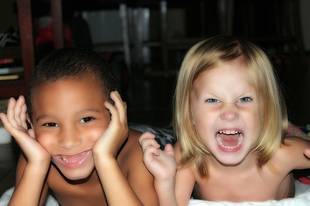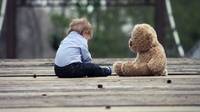
The most important forms of social behaviour necessary for successful social adjustment appear and begin to develop at this time. In the early years of childhood, these forms are not developed well enough to enable the child to get along successfully with others at all times. However, this is a crucial stage in development because it is at this time that the basic social attitudes and the patterns of social behaviour are established. In a longitudinal study of a group of young children, Waldrop and Halverson reported that those children who, at age 2 ½ years, were friendly and socially active continued to be so when they reached the age of 7 ½ years. They concluded that “Sociability at 2 ½ years was predictive of sociability at 7 ½ years.”
The different forms of behaviour in social situations during the early childhood years are given below. Note that many of these patterns appear to be unsocial or even antisocial rather than social. However, each of these apparently unsocial or antisocial patterns of behaviour is important as a learning experience that will enable young children to know what the social group approves and disapproves and what it will and will not tolerate.
Social And Unsocial Behavior Patterns
Social Patterns
Imitation
To identify themselves with the group, children imitate the attitudes and behaviour of a person whom they especially admire and want to be like.
Rivalry
The desire to excel or outdo others is apparent as early as the fourth year. It begins at home and later develops in play with children outside the home.
Cooperation
By the end of the third year, cooperative play and group activities begin to develop and increase in both frequency and duration as the child’s opportunities for play with other children increase.
Sympathy
Because sympathy requires an understanding of the feelings and emotions of others, it appears only occasionally before the third year. The more play contacts the child has, the sooner sympathy will develop.
Empathy
Like sympathy, empathy requires an understanding of the feelings and emotions of others but, in addition, it requires the ability to imagine oneself in the place of the other person. Relatively few children are able to do this until early childhood ends.
Social Approval
As early childhood draws to a close, peer approval becomes more important than adult approval. Young children find that naughty and disturbing behaviour is a way of winning peer approval.
Sharing
Young children discover, from experiences with others, that one way to win social approval is to share what they have – especially toys – with others. Generosity then gradually replaces selfishness.
Attachment Behavior
Young children who, as babies, discovered the satisfaction that comes from warm, close, personal association that comes from warm, close, personal associations with others, gradually attach their affection to people outside the home, such as a nursery school teacher, or to some inanimate object, such as a favorite toy or even a blanket. These then become what are known as attachment objects.
Unsocial Patterns
Negativism
Negativism, or resistance to adult authority, reaches its peak between three and four years of age and then declines. Physical resistance gradually gives way to verbal resistance and pretending not to hear or understand requests.
Aggressiveness
Aggressiveness increases between the ages of two and four and then declines. Physical attacks begin to be replaced by verbal attacks in the form of name-calling, tattling, or blaming others.
Ascendant Behavior
Ascendant behaviour, or “bossiness,” begins around the age of three and increases as opportunities for social contacts increase. Girls tend to be bossier than boys.
Selfishness
While young children’s social horizons are limited mainly to the home, they are often selfish and egocentric. As their social horizons broaden, selfishness gradually wanes but generosity is still very undeveloped.
Egocentrism
Like selfishness, egocentrism is gradually replaced by an interest in and concern for others. How soon this change will occur will depend on how many contacts young children have with people outside the home and how anxious they are to win their acceptance.
Destructiveness
A common accompaniment of temper outbursts in young children is destroying anything within their reach, whether their own or someone else’s possessions. The angrier they are, the more widespread their destructiveness.
Sex Antagonism
Until they are four years old, boys and girls play together harmoniously. After that, boys come together harmoniously. After that, boys come under social pressures that lead them to shin play activities that might be regarded as “sissyish.” Many engage in aggressive behaviour which antagonizes girls.
Prejudice
Most preschool children show a preference for playmates of their own race, but they seldom refuse to play with children of another race. Racial prejudice begins sooner than religious or socioeconomic prejudice, but later than sex prejudice.


















